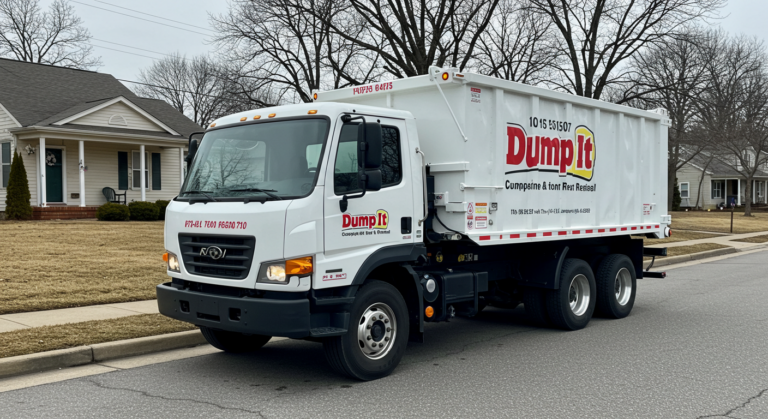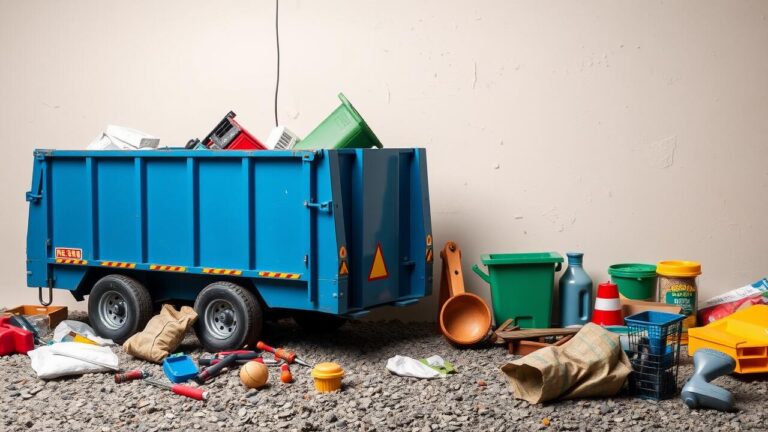Why Construction Dumpsters are Essential for Large Projects
Permits and Regulations for Dumpster Use
Understanding the necessary permits and regulations for dumpster use is crucial for any large construction project. Local governments often impose specific guidelines that dictate where and how dumpsters can be placed on job sites. Neglecting to secure the required permits can result in fines and project delays. It’s advisable to consult with local authorities to grasp all relevant regulations, ensuring compliance throughout the project duration.
In addition to permits, considerations regarding placement and usage must be addressed. Dumpsters often require designated spots that do not obstruct traffic or pedestrian movement. Understanding zoning laws assists in choosing appropriate locations. Adhering to these regulations not only avoids legal complications but also fosters a safer environment for workers and the public alike.
Understanding Local Guidelines for Placement
Local regulations dictate specific requirements regarding the placement of construction dumpsters. These guidelines often include restrictions on where dumpsters can be positioned, taking into account factors like road access, sidewalk availability, and proximity to utility lines. Before setting up a dumpster, project managers must check with local authorities to ensure compliance with zoning laws and obtain any necessary permits. This diligence can prevent potential fines or project delays caused by violations.
Understanding these regulations also helps in mitigating hazards associated with improper dumpster placement. Dumpsters positioned too close to traffic lanes may pose safety risks, while placement on public property might require additional permits. It is crucial to evaluate the site carefully, considering not just the logistical aspects of loading and unloading but also the environmental impact. Adhering to local guidelines ensures that the space remains safe and functional for all project participants.
Tips for Maximizing Dumpster Space
To make the most of available dumpster space, effective sorting and organization of materials are essential. Begin by separating items into categories such as metal, wood, and drywall. This not only aids in recycling efforts but also allows for more efficient packing. Large, flat items should be placed at the bottom to create a stable base. Smaller, lighter materials can then be placed on top, which helps in maximizing vertical space.
Additionally, consider breaking down bulkier items before disposal. Disassembling furniture or cutting large pieces of wood can significantly reduce their volume. This practice allows for a tighter fit within the dumpster. Regularly checking the dumpster as the project progresses enables adjustments to be made, allowing for continued optimization of space throughout the duration of the project.
Effective Sorting and Stacking Techniques
Organizing waste materials effectively can dramatically enhance the efficiency of any construction project. Begin by categorizing debris into distinct groups such as wood, metal, and cardboard. This not only clarifies the disposal process but also ensures that recyclables are properly handled. Utilizing separate containers for different material types will streamline cleanup efforts and reduce the risk of contamination during recycling.
Stacking materials properly within the dumpster maximizes available space. Place lighter items on top of heavier ones, and ensure that all items are compactly secured to prevent shifting during transportation. Some construction sites benefit from using tarps or netting over the top of the dumpster to keep materials contained, especially during windy conditions. By employing these techniques, crews can maintain a tidy worksite while minimizing overflow and inefficiencies.
The Impact on Project Timelines
Efficient cleanup is crucial for maintaining momentum in any large project. A well-placed construction dumpster allows for the immediate disposal of debris and waste materials. When workers have easy access to waste removal, they can focus on their tasks without unnecessary interruptions. This accessibility plays a significant role in ensuring that projects progress according to schedule.
Delays often arise when waste accumulates, creating hazards and obstructing work areas. By keeping the job site organized with a designated dumpster, teams can minimize potential setbacks. Regularly emptying the dumpster also ensures that space remains available for new waste, preventing overflow and further disruptions. Effective waste management not only prevents project holdups but also promotes a safer and more efficient work environment.
Keeping Projects on Schedule with Efficient Cleanup
Efficient cleanup during construction projects plays a pivotal role in maintaining project timelines. A well-organized waste management strategy reduces clutter and enhances safety on-site. Properly placing dumpsters in accessible locations can streamline the disposal process, allowing workers to quickly offload debris without wasting time. Establishing a routine for emptying and replacing dumpster containers ensures that waste does not accumulate, preventing disruptions that can delay progress.
Developing a clear plan for disposing of various materials also contributes to keeping projects on schedule. By designating specific dumpsters for different types of waste, teams can address recycling needs effectively while minimizing contamination. Educating workers on these sorting practices fosters a culture of responsibility, ensuring that everyone understands the importance of maintaining an efficient cleanup process. The collective effort to manage waste appropriately not only supports a timely completion of project goals but also promotes a safer working environment.
The Importance of Regular Maintenance
Regular maintenance of construction dumpsters plays a crucial role in ensuring their effectiveness throughout a project. When dumpsters are clean and well-maintained, it not only enhances the safety of the site but also streamlines the waste disposal process. Regular checks for damage or wear can prevent breakdowns that might impede project timelines. Addressing these issues promptly minimizes the risk of accidents and promotes a smoother operation on-site.
Maintaining cleanliness is essential for compliance with environmental regulations. A neglected dumpster can attract pests and create unpleasant odors, potentially leading to health hazards. Implementing a schedule for routine cleanouts and inspections can improve functionality and prolong the lifespan of dumpsters. By prioritizing maintenance, project managers can contribute to a more organized and efficient work environment, supporting overall project success.
Ensuring Cleanliness and Functionality of Dumpsters
Regular maintenance of dumpsters plays a crucial role in their effectiveness. A clean dumpster not only improves the overall project site but also promotes safety for workers. It is essential to monitor fill levels daily to avoid overloading and ensure that waste materials do not spill over. In addition, keeping the exterior clean and free of debris can minimize odors and prevent pest issues, contributing to a healthier work environment.
Ensuring functionality involves more than just cleanliness. Inspecting dumpsters for any damages or malfunctions allows for timely repairs, maintaining their usability throughout the project duration. Providing clear signage on acceptable waste types helps avoid contamination, streamlining the disposal process. Taking these proactive steps ensures that dumpsters remain an efficient and reliable resource during large construction projects.
FAQS
What types of projects benefit from using construction dumpsters?
Construction dumpsters are essential for large projects such as home renovations, commercial building constructions, demolition work, and landscaping projects, where substantial waste and debris are generated.
Do I need a permit to place a dumpster on my property?
Yes, many local jurisdictions require permits for placing dumpsters, especially if they will be on public property or streets. It’s essential to check with your local authorities for specific regulations and requirements.
How can I maximize the space in a construction dumpster?
To maximize space, use effective sorting and stacking techniques, such as breaking down large items, evenly distributing weight, and keeping similar materials together to optimize the available room.
How can efficient dumpster use impact my project timeline?
Efficient use of dumpsters can significantly reduce cleanup times and prevent delays. By keeping the site organized and disposing of waste regularly, projects can remain on schedule and minimize disruptions.
What maintenance is required for construction dumpsters?
Regular maintenance includes keeping the dumpster clean, ensuring it is properly closed to prevent spillage, and checking for any damage or functionality issues. This helps maintain a safe and efficient work environment.







